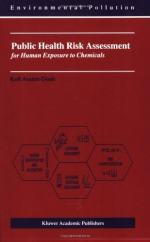|
This section contains 867 words (approx. 3 pages at 300 words per page) |

|
Pollution shifting is defined as the transfer of pollution from one medium (air, water, or soil) to another. Early legal efforts to control pollution focused on single media. For example, in the United States, the Clean Air Act covers air and the Clean Water Act covers water. However, pollution is not constrained by statute; it can shift between media by both natural and human action. Pollution management is improved when all media are considered.
Intentional pollution shifting may occur to destroy a pollutant, convert it to a safer form, or reduce its quantity or concentration. Examples of intentional pollution shifting include combustion, air stripping, air scrubbers, and adsorption. Intentional pollution shifting is accomplished by chemical reaction and/or mass transfer. Chemical reactions can convert reactants in one media into products in a different media. In mass transfer shifting, differences in concentration are used to transfer pollutants...
|
This section contains 867 words (approx. 3 pages at 300 words per page) |

|


